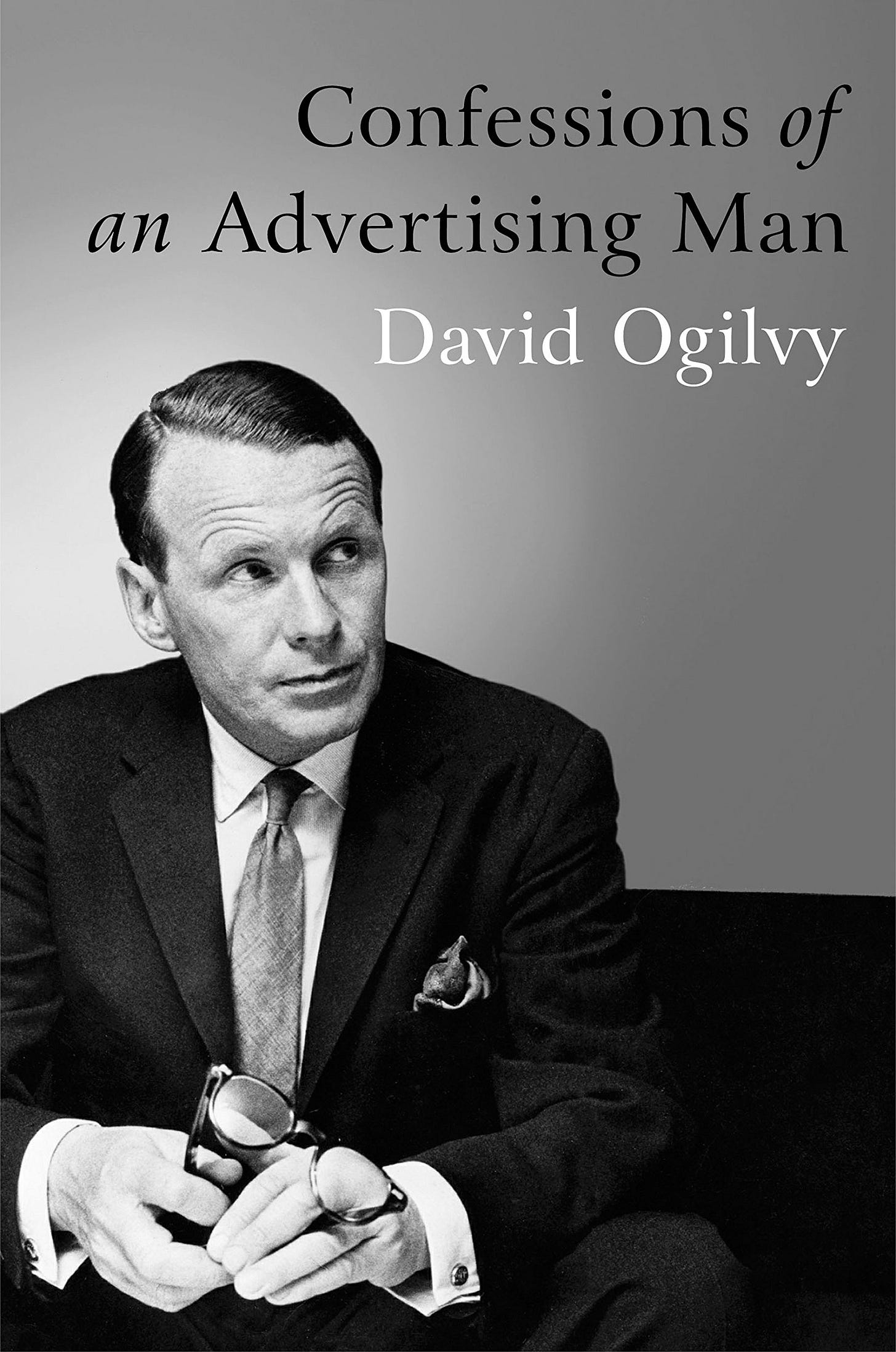📚Book Club - Confessions Of An Advertising Man Part 5
AKA how to tell when someone's heart is in creative vs. administrative.
It’s Book Club - a weekly post and thread about a book that matters. Let’s do this!
On tap: Week 5 of David Ogilvy’s iconic Confessions of an Advertising Man.
Pro tip: Anytime anyone discusses advertising campaigns with you, just think “project management.”
This book was written back in the 1960s. Advertising’s changed a lot since then. Cable TV! The internet! Experiential! Gaming! So many new things.
But, oddly, advertising campaigns don’t seem to have changed that much.
Ad campaigns are tricky little beasts. You have a bunch of different advertisements that are the product of months of internal creativity, client politicking and budget waist-watching. You have a set of goals you want the public to act on (buy a product! sign up for a website!) after seeing your ads. You have a set of KPIs your client and you use to measure the campaign’s performance.
SO MANY DAMN MOVING PARTS.
But at their core is a creative idea. And, in Ogilvy’s words, “What you say is more important than how you say it.”
Damn it, I should have paraphrased that.
But that concept—that the substance matters more than the packaging!—hasn’t changed for advertising at all since the 1960s. That’s kind of great. If your campaign has an inner core of crappiness, if it’s a bad fit for the brand or if it’s a bad fit for your target audience… that’s gonna get figured out real fast, real quick.
Also in Ogilvy’s tips:
“Give the facts.”
“You cannot bore people into buying.”
“Be well-mannered, but don’t clown.”
“Make your advertising contemporary.”
“Committees can criticize advertisements, but they can’t write them.”
“If you are lucky enough to write a good advertisement, repeat it until it stops pulling.”
“Never write an advertisement which you wouldn’t want your own family to read.”
“The image should match the brand.”
“Don’t be a copycat.”
Still relevant today. Except… dude’s skill set was as a creative and as a leader, not necessarily as an administrator, and the book reflects this.
Advertising campaigns consist mostly of piddling, iterative, glacially paced project work. Meetings with the clients, meetings with the vendors, assembling reports of metrics and emphasizing what works at the expense of what doesn’t work.
If you’re making a career in advertising, all that boring and unsexy non-creative work is what makes the campaigns you work on pop. And I know you hate the fact that I’m writing that.
But here’s the thing: If you’re a creative person, you get lots of ideas all the time. Many, maybe even most of those ideas, are really good ideas. But without refining those ideas, targeting how you’re sharing them and who you’re sharing them with, without keeping track of those ideas, without paying close attention to how those ideas are received… well, you’re going to have a hard time making those ideas succeed.
Next week: Copywriting.





